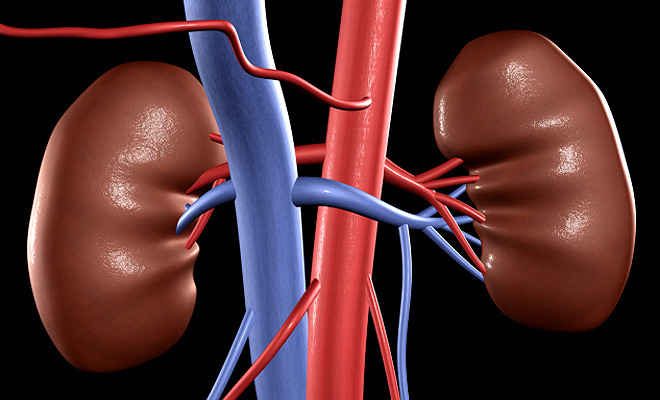
World first research shows shocking numbers of preventable deaths from gaps in kidney failure treatment
Australian research published in The Lancet shows that more than two million people globally die unnecessarily every year because they cannot access treatment for kidney failure (dialysis or a kidney transplant). By 2030 the number of people receiving treatment is predicted to double to over five million.
The new findings point to an urgent need for affordable dialysis (currently US$ 20,000 – $100,000 per person per year) and population-wide prevention strategies for kidney disease. In Australia dialysis costs the Australian taxpayer around AU$1 billion a year.
Lead author, Professor Vlado Perkovic of The George Institute and The University of Sydney, said the findings present a grim picture of the prevalence of kidney failure which is worse than previously thought.
“The sad reality is that most of these deaths are preventable and the biggest burden lies in low to middle income countries where there are instances of less than a quarter of patients receiving treatment for kidney failure,” says Professor Perkovic.
“This could get worse - over coming decades kidney failure rates are projected to grow rapidly and millions of people appear doomed to die without access to dialysis without specific action, with Asia being hit the hardest,” he said. “We urgently need to find ways to get people the treatment they need by making dialysis affordable, and by implementing preventative measures so fewer people develop kidney failure in the first place,” he says.
“Dialysis has been around for half a century, yet the technology hasn’t evolved substantively, remaining hugely expensive despite its simplicity,” explains Professor Perkovic, “Computers have shrunk from the size of buildings to that of a watch in this time; that’s the kind of radical overhaul needed.”
“Effective kidney disease prevention strategies include controlling blood pressure and glucose levels, taking proven protective medications and managing key risk factors like diabetes and obesity, but archaic and inconsistent models of care and gaps in treatment such as lack of access to local health professionals stop people from getting these.”
In Australia, kidney disease is a leading cause of death and disability and contributes to approximately 15% of all hospitalisations. Associated with other life threatening chronic conditions like heart disease and diabetes, kidney disease is a rapidly growing yet under recognised health problem.
Commenting on the implications of the findings, co-author, Professor Alan Cass, director of the Menzies School of Health Research and President of the Australian and New Zealand Society of Nephrology, said these findings set a demanding task for the nephrology community and healthcare and research communities in general.
“We now have the evidence we need to set global targets and a strong incentive for industry to invest in low cost technologies for dialysis,” says Professor Cass.
“Australia is home to some of the world’s leading kidney specialists and researchers, so is well placed to play a leading role in finding innovative solutions to better prevent and treat kidney failure. Today these are major health challenges facing the global community”, he said.
As a result of this research, a world-wide competition is being launched today to design the world’s first affordable dialysis machine, attracting a prize of $US100,000.
“Dialysis machines purify the blood, replacing an essential function of the kidneys. If we can develop an affordable dialysis machine with low operating costs, that runs on solar power and uses local water sources, many more people will have access to the treatment and millions of lives could be saved,” says Professor Perkovic.
Professor Tim Mathew, Medical Director of Kidney Health Australia, says “Australians with kidney failure can be grateful that the direct costs of their treatment are covered by Medicare, around $60,000 a patient a year, while many other patients around the world are not so fortunate.”
“Kidney Health Australia welcomes the Affordable Dialysis Prize and commend it to engineers, inventors and visionaries everywhere, but especially in Australia, which has been the source of so many medical breakthroughs over the years.”
Recommendations stemming from the findings suggest that the increasing gap in treatment demands a combined advocacy, health-care delivery and research action plan:
1. AWARENESS: Governments should be made aware of the number of preventable deaths in their jurisdictions and lobbied to increase access to dialysis for affected individuals where possible as part of their broader health planning activities
2. PREVENTION: Innovative models of preventative care should be piloted in low- and middle-income countries, especially in areas where access to physicians is low. Effective kidney disease prevention strategies could include blood pressure control, especially using drug classes of proven benefit and management of key risk factors including diabetes, obesity and acute kidney injury.
3. AFFORDABILITY: More cost-effective dialysis techniques must be developed and made available. Current dialysis treatment will remain unaffordable, and therefore inaccessible, for many of the countries where access to renal replacement therapy is lowest. Considering the increase in the expected number of patients requiring treatment, dialysis provision will also represent a substantial financial burden for even the most high income countries in the years ahead.
BACKGROUND
The Affordable Dialysis Prize is sponsored by The George Institute, the International Society of Nephrology and the Asian Pacific Society of Nephrology, with the support of the Farrell Family Foundation. For more information visit: www.georgeinstitute.org.au/projects/dialysis-competition



